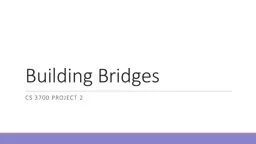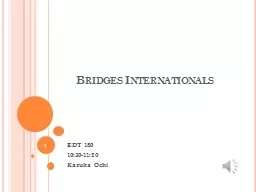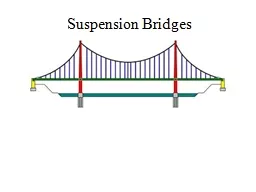PPT-Building Bridges CS 3700 Project 2
Author : conchita-marotz | Published Date : 2018-03-22
Goals You will write a program that implements a simple Ethernet bridge The bridge must forward packets from hosts Thus youll need to maintain a forwarding table
Presentation Embed Code
Download Presentation
Download Presentation The PPT/PDF document "Building Bridges CS 3700 Project 2" is the property of its rightful owner. Permission is granted to download and print the materials on this website for personal, non-commercial use only, and to display it on your personal computer provided you do not modify the materials and that you retain all copyright notices contained in the materials. By downloading content from our website, you accept the terms of this agreement.
Building Bridges CS 3700 Project 2: Transcript
Download Rules Of Document
"Building Bridges CS 3700 Project 2"The content belongs to its owner. You may download and print it for personal use, without modification, and keep all copyright notices. By downloading, you agree to these terms.
Related Documents














